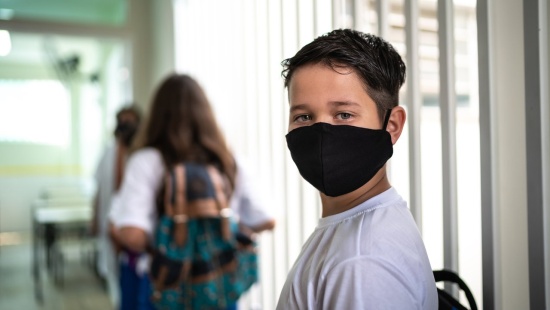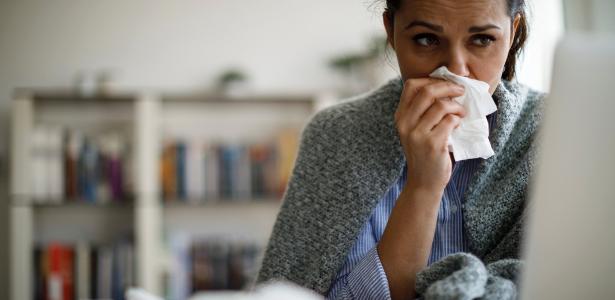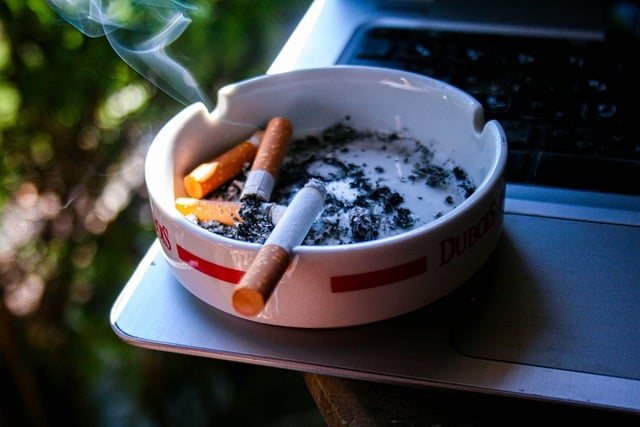
Brazil was the country that kept schools closed the longest. During this period, biosafety protocols were established, personal protective equipment (PPE) and other hygiene items were acquired, and priority was given to education professionals in immunization against COVID-19. There is only one thing left: putting students in classrooms and bringing educational institutions back to life. During the second half of 2021, we began the process of full and mandatory resumption of in-person activities.
In the process, on the one hand, there was fear and insecurity. On the other hand, the certainty that the resumption of classes is a more urgent measure to reconnect schools, teachers and students, reduce the increase in dropouts and begin to reconfigure learning.
Returning to the classroom, gradually and with students rotating, revealed that networks were set up, and schools, with protocols implemented, were less dangerous environments. However, it was noted that it was time to resume activities with all students.
This is the scenario that is presented today in various state and municipal networks. With that, several questions came up: Is this 100% return safe? What does it mean to be mandatory?
Are we ready to return safely?
Studies indicate That with health protocols, the risks of transmission of COVID-19 in schools are being mitigated. The virus is transmitted mostly through the air. Thus, using masks and maintaining well-ventilated school environments are simple but effective measures to prevent infection. Therefore, there is a recommendation to give preference to the use of outdoor spaces. When this is not possible, ensuring air circulation is already an effective measure.
Let’s learn outdoors?
Check the possibilities of learning in outdoor environments, which at this time should have priority to resume face-to-face activities in accordance with health protocols.
In addition to airborne pollution, there is also a low (but not empty) potential for Infection by contact. Therefore, it is still necessary and important to disinfect environments frequently with alcohol – and to encourage all school staff and students to wash their hands thoroughly with soap regularly.
In July 2021, a US Centers for Disease Control and Prevention (CDC), identified that after schools reopened, all cases of children and teens who contracted COVID-19 did so in a family setting or outside of school. And even if the disease is detected after the student has attended face-to-face activities, this will not have repercussions, in most cases, for new cases within that school. Therefore, there was no evidence that returning to face-to-face school activities raised the level of infection.
in the same sense, European Center for Disease Prevention and Control (ECDC) He argues that closing schools is only a necessary measure in the case of total confinement. This is due to the absence of a health or scientific reason that justifies the differentiation of the school environment from other spaces of social interaction, which continued even before the reopening of schools.
To this we must add another encouraging news: the National Health Surveillance Agency (Anvisa) must evaluate, in the near future, the application for the launch of immunization for children aged 5-11 years. If this audience is confirmed to be vaccinated, there will be more safety in the process of returning to classes. In the United States, vaccination has already begun for this age group.
Vaccines in the arm and in math classes
Vaccination, in addition to being essential for a safe return, can also be used to develop early years math skills
Thus, returning with all students is a safe measure if health protocols are guaranteed. However, the decision to fully reopen must be taken together with the health field and guided by the epidemiological indicators for each region. If there is an understanding that distance must be maintained in the classroom, and for reasons of physical space, there is no way to accommodate all students in that environment, it is possible to continue the shift of students. After all, it is a procedure based on sanitary standards.
Communication and transparency should guide this whole process, in order to reassure the entire school community about the measures adopted. It is also necessary to make everyone aware that preventive measures should not be neglected outside the school environment. Dialogue is the key word.
What does mandatory return mean?
Compulsory return to face-to-face lessons does not mean ignoring the fact that we are still in a pandemic. And those security protocols will not be prerequisites for reopening them.
The obligation pertains to families choosing whether or not to send children and adolescents to school. He assures that they cannot stop attending classes, except for a justifiable reason. For example, having a health professional validated comorbidity who has not yet been regularly immunized.
This scenario differs from the scenario observed at the beginning of the year, which is still the norm in a part of Brazil, where face-to-face school activities were optional. In it, administrators can choose to stay 100% remote.
Back in person in 2021
Discover the main challenges, points of interest and lessons for those who have returned in person in the second half of 2021
Back in Brazil and in the world: what has been done
There are different ways. However, there are recommendations for reopening to be a gradual transition from a mixed format to a mandatory full resumption.
There is no consensus on the distance between students in the class. In Brazil, states such as São Paulo, Bahia and Mato Grosso do Sul do not use this rule, while others, such as Goiás, Piauí and Santa Catarina, adopt a distance of 1 to 1.5 meters.
internationally Canada it’s the United kingdom It did not adopt any measure to remove students. in other countries, like Spain, Sim. France, which removed the rule of distancing between students, He returned and resumed measurements in November.
On the other hand, the mandatory use of masks is an almost unanimous rule – the few places that have not already adopted them are starting to show signs of remorse. In the UK, where this decision has been delegated to local governments, there has been an increasing number of localities Determining the mandatory use of masks in the classroom after an increase in pollution cases.
Full return requirements should be established, in partnership, through the areas of health and education. A broad network of actors must work together to plan the appropriate strategy for each education network.
Feedback through dialogue and building together, with broad participation and transparency, is the best path. The public authority (in the form of general managers, supervisory bodies, the Trusteeship Council and the justice system), education and health professionals, student representatives and guardians must work in harmony. The participation of those who are in the daily life of the school is essential, because there is no one better than them to know the reality of that society. And more: they will be able to effectively monitor what has been agreed upon. The success of the safe return is linked to the constant inspection of everyone.
Free course: Reception and security when returning to the classroom
Understand how to ensure emotional support; Organized active search for safe return, with all hygiene and health protocols, ensuring learning.
In the face-to-face recovery process, it is also necessary to ensure the reception of education professionals and students. The pandemic has left its mark on all of us. Knowing how to listen and understand each other’s difficulties are essential practices. Therefore, unity, cooperation, sympathy and solidarity must be part of the vocabulary of return.
As students return to the classroom, diagnostic assessments, aimed at checking what students have internalized, will be essential to building effective strategies for reconfiguring learning.
The Brazilian Education website has been one of the victims of COVID-19 and we still don’t have the exact dimension of the impact. It is necessary to slow down the process of loss and start the reverse path. Put Brazilian education back on track. For this, the resumption of the obligatory face-to-face activities is a crucial step.
Alessandra Guti He is the founder and CEO of Instituto Articule. PhD in Constitutional Law from PUC/SP. She was a consultant to the United Nations Educational, Scientific and Cultural Organization (UNESCO) and to the National Education Council.
Arthur Paco Ottolini in Albany He is an active participant and project advisor at the Artecul Institute. Master’s degree in Law from the University of the South Pacific. Legal Assistant at the Court of Justice of the State of São Paulo.

“Friendly zombie guru. Avid pop culture scholar. Freelance travel geek. Wannabe troublemaker. Coffee specialist.”

:strip_icc()/i.s3.glbimg.com/v1/AUTH_7d5b9b5029304d27b7ef8a7f28b4d70f/internal_photos/bs/2023/E/6/nsd9MuSKCo0r6wAYjVaQ/gettyimages-1246519315.jpg)



:strip_icc()/i.s3.glbimg.com/v1/AUTH_5dfbcf92c1a84b20a5da5024d398ff2f/internal_photos/bs/2024/l/E/u0V6Q5Re24pOalR3tCqw/auto-upload-2074322.jpg)
